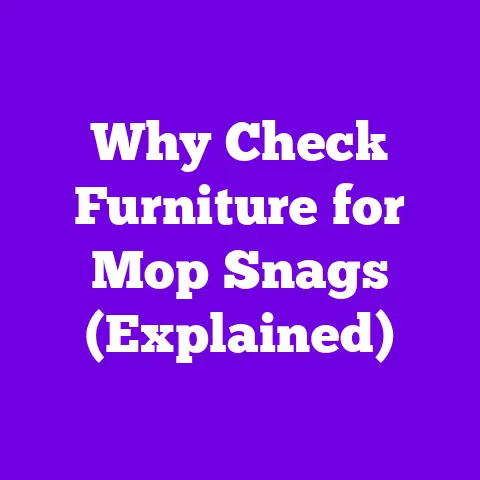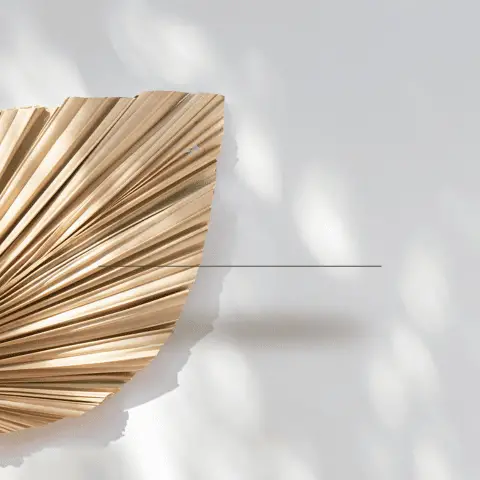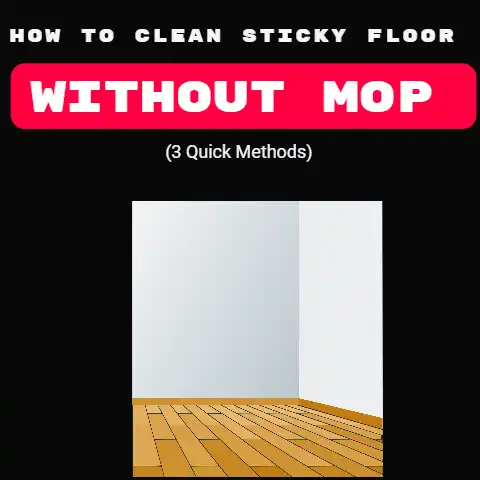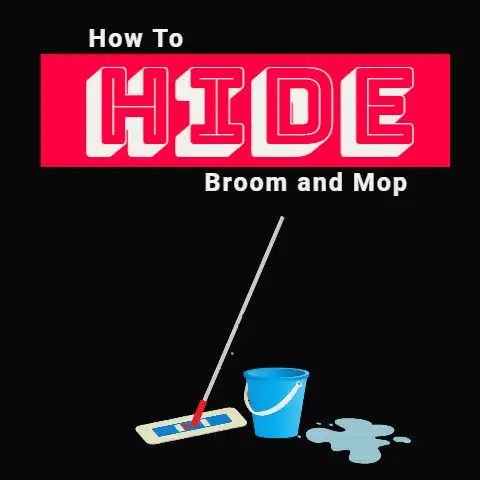How Long Do Mops Last (3 Months To 5+ Years)
The lifespan of mops varies based on factors like type, frequency of use, and maintenance. Cut-End mops last 7-9 days, Cotton Mop Heads up to 50 washes, and Microfiber Mop Heads up to 400 washes or more with proper care, but these estimates are general guidelines and can vary. Proper maintenance, such as rinsing after each use and following manufacturer instructions, can extend a mop’s life.
Planning to buy a mop?
It is important to choose a mop that is functional and durable. That means the mop has to last long and provide value for money.
If you choose a mop that is priced heavily and only lasts like three months, that isn’t the best buy.
Here is how long each type of mop lasts.
Key Takeaways
- Different settings require different mop designs and cleaning methods.
- Signs of a worn-out mop include loss of absorbency, fraying or worn-out strands, and bad odor.
- Factors affecting mop longevity include frequent use, exposure to harsh cleaning chemicals, and improper storage.
- Factors affecting mop effectiveness include loss of absorbency, fraying or worn-out strands, ineffective removal of dirt and stains, and improper mop usage.

Robot Mops Durability
Robot mops are the new thing and are the quickest, most automated version of a mopping system.
They operate on battery, have small attached water tanks, and can help scrub off grime and clean spills immaculately.
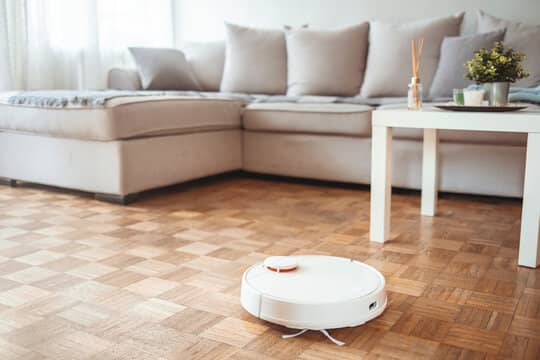
The biggest benefit is that while all of this is going on, you don’t have to be involved at all. Robot mops operate on their own.
Their battery life usually lasts about 90 minutes, but the whole system usually comes with a warranty that lasts from a year to ten years, depending on the brand and the offer.
Of course, since they are a bit more expensive, robot mops are expected to last longer.
However, this also pertains to how you use them and whether they are cleaned and maintained properly.
If you use them roughly or break them, their durability is going to be much shorter.
Bear in mind that they are more easily broken than they are electronic gadgets.
To make a mop last long, always clean it after use and store it as advised in the manual.
Spin Mops Durability
Spin mops are huge mop sets that are fashioned in a way that makes it seem as if the microfiber material is spinning.
The material is dispersed under a handle and with little effort on your part, you can spin the mop to get into tough corners and clean stains.
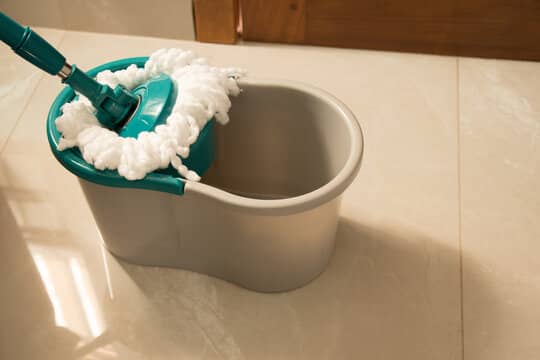
The spin mop is great to help you clean tough surfaces and is also great for hardwood floors.
The durability of this mop depends on how often you use it and the moisture bucket that it usually comes with.
On average, a spin mop is expected to last about a year or six months.
Again, this depends on how you use it and how often.
If you use it without care and let it sit in the moisture bucket for long periods or use it to try and clean very tough surfaces, it is likely to wear out much sooner than expected.
Make sure you use it properly and for ideal results, and since the mop is very reasonably priced, try to change your spin mop every three to six months.
Steam Mops Durability
Steam mops are also a new addition to the mop family but aren’t as new as robot mops.
Steam mops let out steam while you set a moisture level to fight away hard stains on floors and perhaps on furniture as well.
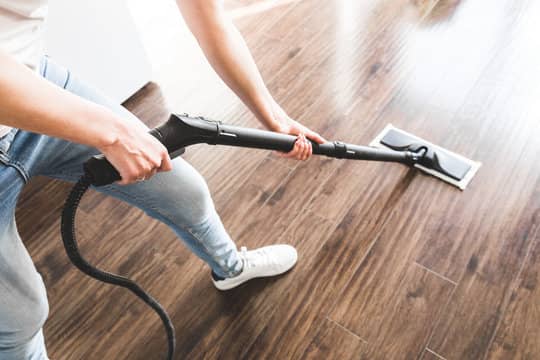
They are known to be highly effective and a bit on the more expensive side.
Therefore, again steam mops can last several years but it is ideal to buy a new one every year or two perhaps.
However, if you use it sparingly- like once a week, it can last much longer.
Again durability depends on how well you maintain the item, how often you use it, and the brand you choose to use.
Usually, more expensive versions are more durable, while cheaper kick-offs may lack quality at times.
Some users have claimed that steam mops are a bit difficult to use for them, but those who are familiar with using them and comfortable at the same time, claim to have gotten excellent results.
The steam mop is a favorite amongst homemakers.
Wet Mops Durability
Wet mops are the more traditional handle with a towel-like mopping material model.
They help you swerve to wipe off surfaces that require a highly moisturized mop.
They aren’t ideal for hardwood floors that sometimes require a more dry wipe but are great for marble, tiles, and other similar surfaces.

The wet mop is probably the cheapest amongst the lot and, therefore, shouldn’t be expected to last that long.
It can easily last about a year as well, depending on maintenance and use, but it is advisable that a wet mop is changed every three months or sooner.
For example, if you have a family of six and four of them are children who are spilling drinks and drawing on the tiled floors all day, your mop may be used several times a day.
Therefore, the mopping material will get worn pretty quickly.
In this scenario, you may have to change your mop every month or buy two a month.
It is also ideal for keeping a wet mop for different rooms and perhaps keeping the one used in the bathroom and for wiping away baby mess separately as it can also leave a stench.
You will have to wash your wet mop too to keep it clean regularly. With proper care and handling, you can use these types of mops for a long time.
Sponge mop Durability
The sponge mop is very popular, and people love it because it can be used to clean roofs, walls, and surfaces.
The sponge at the end of the mop can absorb spills, and liquid, and also help scrub surfaces perfectly.
It is an old addition to the mop family but a very beneficial one.
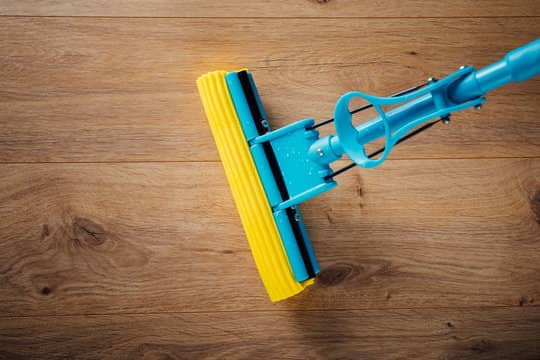
The sponge mop is also rather economically priced and as before, it depends on how often you use it and how well you clean it.
You can expect the sponge mop to last about a year, but it should be changed every three to six months.
If the sponge mop is being used in a commercial setting or a household with plenty of members, it should be changed more regularly.
It is also advisable to purchase different sponge mops for walls and others for floors.
If your sponge mop is drenched in vivid colors because of what it has cleaned up over time, it isn’t advisable to use the same one on walls.
Factors Affecting the Lifespan of Mops
The lifespan of mops can be influenced by several factors.
Material and quality play a crucial role, as mops made with durable materials tend to last longer compared to those made with cheaper or low-quality materials.
Additionally, the frequency of use impacts the lifespan of mops, as frequent use can lead to wear and tear over time.
Moreover, the cleaning routine followed and the environment in which the mop is used also contribute to its longevity, as proper maintenance and suitable usage conditions can prolong its lifespan.
Material and Quality
This discussion focuses on the types of materials used in mops, such as cotton, microfiber, and sponge.
Different materials have varying levels of durability and effectiveness in cleaning.
The quality of the material directly impacts how long a mop will last, with higher-quality materials generally offering greater longevity.
Types of mop materials (e.g., cotton, microfiber, sponge)
Cotton, microfiber, and sponge are different materials commonly used in mops.
Each material has its own advantages and is suitable for specific cleaning purposes.
Microfiber mop heads are known for their excellent absorbency and ability to trap dust and dirt particles.
Cotton string mops are durable and effective for heavy-duty cleaning on various floor types.
Sponge mops, with their reusable cleaning pads, are ideal for quick spills and light maintenance.
Choosing the right mop material is essential for proper cleaning based on the type of floor surface.
| Material | Advantages |
|---|---|
| Microfiber | Excellent absorbency; traps dust and dirt |
| Cotton String | Durable; effective for heavy-duty cleaning |
| Sponge | Reusable pads; ideal for quick spills |
Impact of material quality on durability
One key factor affecting the durability of mop materials is the quality of the material used.
The following factors impact material quality and subsequently affect mop durability:
- Dirty water: Poor-quality materials may not effectively clean dirty water, leading to reduced cleaning power.
- Hardwood floors: Low-quality materials can scratch or damage delicate hardwood floors.
- Type of mop head: Certain materials may wear out faster than others, impacting overall longevity.
- Mop buckets: High-quality materials can withstand frequent use and resist deterioration from cleaning solutions.
Considering these factors is crucial for maintaining durable mops and ensuring effective floor care during wet mopping or deep cleaning tasks with traditional string mops.
Frequency of Use
This paragraph will introduce a discussion on the subtopic of frequency of use in relation to mops.
The first point to consider is whether mops are used daily, weekly, or only occasionally.
This aspect of usage frequency can have an impact on the lifespan and durability of mops.
Additionally, exploring the relationship between usage frequency and wear and tear is important to understand how frequent use may contribute to the deterioration of mop quality over time.
Daily, weekly, or occasional usage
When considering the longevity of mops, the frequency of usage, whether it be daily, weekly, or occasional, plays a significant role.
The type of floor and flooring surfaces also affect the lifespan of a mop.
For example, robot mops are designed for daily usage and work well on hardwood floors. Dust mops are suitable for regular cleaning on various floor surfaces.
It is important to use clean water and avoid excessive water when mopping to keep floors clean and prolong the life of a mop.
Additionally, using appropriate hardwood floor cleaners can help maintain the condition of hardwood floors.
The relationship between usage frequency and wear and tear
The wear and tear of mops can be influenced by the frequency of usage, with more frequent use potentially leading to a shorter lifespan.
To illustrate this relationship, consider the following table:
| Usage Frequency | Lifespan |
|---|---|
| Daily | Short |
| Weekly | Moderate |
| Occasional | Long |
Proper care, such as rinsing in warm water after each use, using soapy water for sponge mops and hot water for string mop heads, and machine washing when applicable, can help extend the lifespan of mops.
Additionally, using elbow grease and spin mops are effective ways to maintain laminate floors.
Cleaning Routine
This discussion will explore the importance of a proper cleaning routine for different mop types and its role in extending the lifespan of mops.
It is essential to follow appropriate cleaning methods based on the type of mop being used, as different materials require specific care.
Maintaining cleanliness not only ensures effective cleaning but also prevents the build-up of dirt and bacteria, which can lead to deterioration and reduced durability of mops over time.
Proper cleaning methods for different mop types
Proper cleaning methods for different mop types vary depending on the specific type of mop being used.
- For steam mops, avoid using them on delicate flooring types like ceramic tile.
- Microfiber cleaning products are ideal for effectively removing dirt and grime from various surfaces.
- Spin mop heads are effective for deep cleaning corners and hard-to-reach areas.
- Triangular mop heads are suitable for thorough cleaning around furniture.
- Wet mop heads are designed to remove stains and spills, while dust mop heads are best for dry sweeping.
Using the appropriate cleaning method ensures efficient and safe cleaning, avoiding signs of wear and reducing the risk of cross-contamination.
The role of cleanliness in extending mop lifespan
Extending the lifespan of mops is crucial in the cleaning industry.
To achieve this, understanding the role of cleanliness is essential.
Proper maintenance and regular cleaning ensure that mops remain effective for an extended period.
Cleaning solutions tailored to specific mop types, such as microfiber cloths or pads, can efficiently remove tough and sticky stains.
Daily basis maintenance routines, including washing and drying with powerful suction, contribute significantly to maintaining mop longevity.
Environment and Surface
The impact of the floor type is an important consideration when discussing the use and effectiveness of mops.
Different types of flooring, such as hardwood, tile, or vinyl, can have varying levels of durability and susceptibility to damage from cleaning methods.
Additionally, the conditions in which mops are used also play a role in their efficacy.
Whether it’s in a home or commercial setting can affect the frequency and intensity of cleaning required.
Impact of the floor type (e.g., hardwood, tile, vinyl)
Different floor types, such as hardwood, tile, and vinyl, can have varying impacts on the lifespan of mops.
The durability and effectiveness of mops can be influenced by the characteristics of these surfaces.
For example, hardwood floors may require a gentle cleaning approach to prevent scratching or damaging the finish.
On the other hand, tile and vinyl floors are generally more resilient and can withstand a variety of cleaning methods.
It is important to consider the floor type when choosing appropriate cleaning supplies and techniques for maintaining mops.
| Floor Type | Cleaning Method |
|---|---|
| Hardwood | Gentle cleaning with water separate from mop |
| Tile | Can withstand various cleaning supplies and techniques |
| Vinyl | Resilient enough to handle vigorous scrubbing |
This table illustrates how different floor types impact mop longevity by requiring specific cleaning approaches.
For instance, while using a bucket with water might be suitable for mopping a kitchen floor with tiles or vinyl flooring, it may not be recommended for hardwood floors due to potential damage caused by excess moisture.
Additionally, some robotic vacuum mops offer specialized settings for different surface types, ensuring efficient cleaning while preserving mop lifespan.
Consideration of the conditions in which mops are used (e.g., home, commercial settings)
Consideration of the conditions in which mops are used, such as home or commercial settings, can have an impact on their effectiveness and lifespan.
- Home settings: Mops in homes usually encounter less foot traffic and smaller square footage to clean. They may be used for regular maintenance cleaning in living spaces and tight spaces.
- Commercial settings: In contrast, mops used in commercial settings often handle larger square footage and more frequent use due to higher foot traffic. These settings may require more durable mop designs and efficient cleaning methods like spray mops or steam cleaners.
- Different systems: Homeowners may prefer using a bucket system while commercial users might opt for direct replacements to ensure continuous cleaning operations.
Signs of a Worn-Out Mop
Loss of absorbency is one of the key signs indicating that a mop has reached the end of its lifespan.
When a mop no longer absorbs water or cleaning solutions effectively, it becomes ineffective in removing dirt and stains from surfaces.
Another sign of a worn-out mop is fraying or worn-out strands. As the fibers of the mop start to wear down, they become less efficient in picking up dirt and debris.
Additionally, despite regular cleaning, a bad odor emanating from the mop can be an indication that it needs to be replaced.
Loss of Absorbency
One important factor to assess when examining the longevity of mops is the decline in their ability to absorb liquid.
As mops age and become worn-out, they may start losing their absorbency, resulting in ineffective cleaning.
This can be attributed to various factors such as the wear and tear of brush heads or flat heads, deterioration of plastic handles, or accumulation of debris in the mop fibers.
To emphasize this point further, a table can be included:
| Factors contributing to loss of absorbency | Solutions |
|---|---|
| Worn-out brush heads or flat heads | Replace mop head with a new one |
| Deteriorated plastic handles | Invest in mops with sturdy rubber grips |
| Accumulation of debris | Regularly rinse mop fibers and remove any trapped particles |
To maintain optimal absorbency and extend the lifespan of mops, it is recommended to clean them thoroughly after each use using white vinegar or fabric softeners.
Additionally, avoiding sticky messes and wringing out excess moisture using a wringer bucket can prevent premature deterioration.
Remember that using paper towels for dry materials instead of relying solely on a mop can also help prolong its effectiveness.
Fraying or Worn-out Strands
Fraying or worn-out strands in mops are indicative of a decline in their overall effectiveness and can be attributed to factors such as frequent use, harsh cleaning chemicals, or improper storage.
As mops are extensively used for cleaning purposes, it is not surprising that the strands eventually wear out.
The repeated friction between the mop head and the surface being cleaned causes the fibers to break down over time.
Additionally, exposure to harsh chemicals commonly found in cleaning agents can accelerate this process by weakening the strands.
Improper storage techniques, such as leaving a wet mop in a confined space without proper ventilation, can also contribute to fraying.
To prolong the lifespan of mops and maintain their absorbency, it is recommended to follow manufacturer guidelines regarding maintenance and consider rotating between different types of mops based on specific cleaning needs.
Dry mopping or using alternative methods can minimize wear and tear while still effectively playing the cleaning game.
Considering that hundreds of billions of dollars are spent annually on household cleaning products globally, ensuring the longevity of mops is crucial from both an economic and environmental standpoint.
Bad Odor Despite Cleaning
Despite regular cleaning, bad odors can persist in mops for various reasons including bacterial growth, improper drying techniques, or ineffective cleaning agents.
These factors contribute to the accumulation of unpleasant smells that are difficult to eliminate.
The growth of bacteria in damp environments is a common cause of persistent odor in mops.
Bacteria thrive in moisture-rich conditions and can produce foul-smelling byproducts.
Improper drying techniques, such as leaving the mop wet or storing it in an enclosed space without proper ventilation, can also lead to bad odors.
Dampness trapped within the mop’s fibers promotes mold and mildew growth, intensifying the stench.
Additionally, using ineffective cleaning agents may not completely remove all dirt and bacteria from the mop’s fibers, resulting in lingering odors.
Lingering dirt and bacteria release unpleasant odors even after washing, making mopping less effective and more frustrating.
These issues highlight the importance of maintaining cleanliness standards while using mops to ensure a fresh-smelling environment free from unwanted odors.
Ineffectiveness in Removing Dirt and Stains
The ineffectiveness of cleaning agents can hinder the removal of dirt and stains from mops, compromising their ability to maintain cleanliness standards.
Despite regular cleaning, mops may fail to effectively remove stubborn dirt and stains, leaving behind unsightly marks on floors.
This inefficiency could be attributed to various factors such as the quality of the cleaning agent used, the type of surface being cleaned, or even improper mop usage techniques.
Dirt particles and stains can become embedded in the fibers of a mop over time, reducing its effectiveness in subsequent cleanings.
Additionally, using an old or worn-out mop head further exacerbates this issue as it may not have enough absorbency or scrubbing power to tackle tough stains.
Therefore, it is crucial to regularly evaluate and replace mops when necessary in order to maintain optimal cleanliness levels.
| Emotion | Description | Example |
|---|---|---|
| Frustration | Feelings of annoyance | “Despite my efforts…” |
| Disgust | Strong dislike or revulsion | “The sight of dirty floors…” |
| Dissatisfaction | Not pleased with results | “I was disappointed when…” |
Frequently Asked Questions
Can I wash my mop in the washing machine?
The longevity of a mop is influenced by various factors, such as its quality and frequency of use. Regarding washing, it is generally advisable to follow the manufacturer’s instructions as some mops may not be suitable for machine washing.
How often should I replace the mop head?
The frequency of replacing mop heads depends on various factors such as the type of mop, frequency of use, and quality of the mop head. Generally, it is recommended to replace mop heads every 3-6 months for optimal cleaning performance.
What type of mop lasts the longest?
The longevity of mops can vary depending on several factors, such as usage frequency and maintenance. However, microfiber mops tend to have the longest lifespan due to their durable construction and ability to effectively capture dirt and debris.
Can I use bleach to clean my mop?
Bleach can be used to clean mops as it effectively kills germs and removes stains. However, excessive use may degrade the mop’s fibers, shortening its lifespan.
Are there any special storage requirements for prolonging the lifespan of a mop?
Proper storage can help extend the lifespan of a mop. It is recommended to hang mops in a well-ventilated area to prevent mold and mildew growth, away from direct sunlight to avoid damage from UV rays, and ensure they are completely dry before storing.
Conclusion
In conclusion, the lifespan of mops can vary depending on several factors such as frequency of use, type of material, and maintenance practices.
Regular inspection for signs of wear and tear is crucial to determine when a mop needs to be replaced.
By understanding these factors and being vigilant about monitoring the condition of mops, users can ensure optimal cleaning performance.
As the saying goes, ‘A well-maintained mop sweeps away dirt with ease.’


